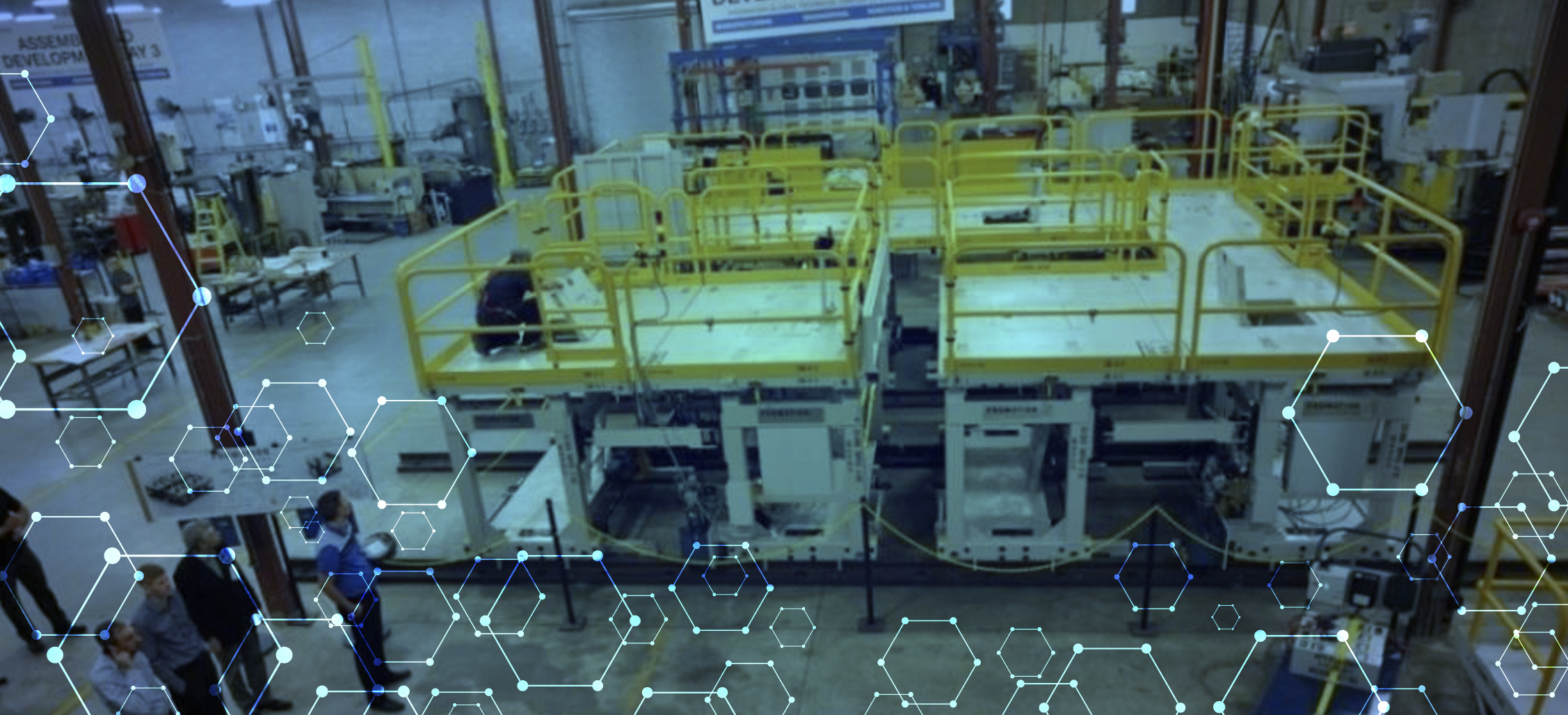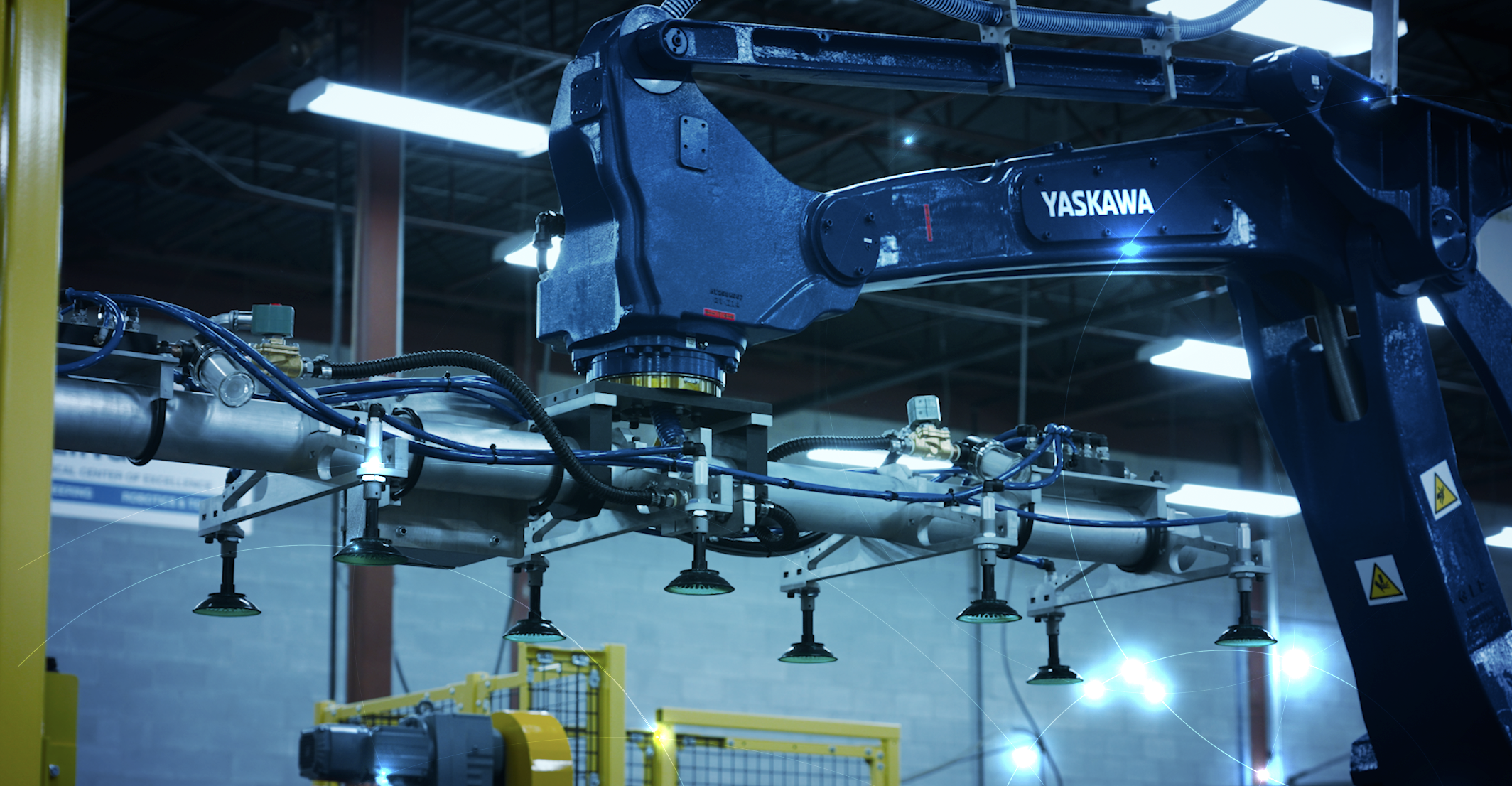The Promation difference

Engineering Groups
Promation’s Engineering is divided into groups based on core functions, with specializations aimed at the specific markets of nuclear, automotive, pharmaceutical, consumer product and others.

A. R&D (engineering) for technology development
B. Application (engineering) for concept development
C. Project (engineering), System (engineering) Process (engineering) for management of a specific project
D. Design (engineering) for Computer Aided Design and Bill of Materials
E. Quality and Manufacturing (engineering) to fabricate, assemble, commission and validate
Promation R&D works closely with Application Engineering, Project and System Engineering to formulate comprehensive solutions for our customers. The R&D Engineering Group uses scientific approaches and methods for quick and seamless adoption of the newest software, sensors, automation and material technologies for wide use by Promation’s Engineering, with the freedom to explore and develop promising new applications. The team contributes advanced capabilities in mechanical engineering, electrical engineering, AI (Artificial Intelligence), Automation and Feedback Control, Vision, Robotics including ROS (Robotic Operating System), CAD/CAM, Post-processor development for CAM software packages, Python, Matlab and Simulation software, including Robotmaster, PowerMill Robot and MW (ModuleWorks), etc. Promation has recently added material science to our R&D portfolio with the aim to add material strength to our solutions.
- Complex First-of-a-Kind (FOAK) custom machinery, tools and systems
- Product development (R&D, product refinement, testing and validation, scale up, manufacturing)
- Problem solving (when there are no commercial options available)
Promation’s Application Engineering supports Sales by delivering innovative design concepts and precise cost estimates for the formal bids provided to our customers. The group consists of our highly experienced and collaborative engineering staff drawing on resources from across our Engineering and Manufacturing groups. They use Computer Aided Design (CAD); simulation software like MathLab & Simulink and FlexSim; robotic and CNC simulation software like RoboGuide and MotoSim; MasterCam; other in-house developed software tools, and device-specific software to provide comprehensive and well-developed solutions for our customers.
- Conceptual Engineering
- Derive preliminary design ideas from requirements and technical specifications
- Concept design solutions
- Derive costs estimates from the conceptual designs - Integration Engineering
- Source commercial/off-the-shelf solutions
- Balance readily available and custom-engineered solutions to meet client budgets and needs
This group has strong engineering backgrounds, based on their prior experience in project management, design, manufacturing or processing as typically found within our client base in their respective markets. The members have strong leadership qualifications supported by Project Management Professional training aligned with customer requirements. The engineering staff from this group report to our customers on a regular basis on the progress of specific projects. The engineers are tasked with running each project, from project kick-off to implementation at the customer site. The team leads the development, design and testing of automated process equipment following TSSA, N285, CSA B51, GAMP 5, AS 9100 REV.D (candidate) requirements. Promation can also help with Tritium water pumping, vacuum drying, filtering systems and OEM assembly line “car wash” leak test systems, etc.
- Preliminary Engineering
- Design requirements
- Technical specifications
- Conceptual engineering reports
- Feasibility reports - Engineering Documentation
- Design plan
- Operations manual
- Software design specifications
- pFMEA
- cFMEA - Requirements Verification
- Testing
- Test Planning
- Test execution and documentation
Our Mechanical Design Engineers utilize SolidWorks to design and SolidWorks Simulation Premium to perform stress and deflection analysis to verify designs prior to fabrication and testing.
a. Mechanical Design Engineering – Nuclear Market
We design, analyze and register pressure retaining systems, vessels and fittings with the TSSA that are compliant with CSA N285.0, and ASME Section III and VIII codes and standards. Our professional engineers also have significant hands-on experience and competency in test planning, test execution and documentation of tests for the design verification and commissioning of tools and machinery for many different industries.
- Engineering Analysis
- Finite Element Analysis using SolidWorks Simulation Premium - Design of Hot Cell Automation Equipment
- Robust quality programs governing engineering design
- N299.1
- ISO 9001
- CSA 13485 – PENDING - Design to codes and standards
- Pressure retaining systems, components and supportsN285.0 (class 1 through 6)
CSA B51
CSA B31.1
CSA B31.3
ASME Section III
ASME Section VIII
Registration with TSSA (acquiring CRN)
- Machine Guarding to CSA Z432
- Industrial Robots and Robot Systems CSA Z434
- Below the hook lifting devices to ASME B30.20 and analyzed to ASME BTH-1
b. Mechanical Design Engineering – Automotive, Industry Market
Our design engineers in material handling, packaging, assembly processes, laser marking, vision inspection and testing systems are very strong in the application of OEM robotic systems, as well as the development and design of special single, two or three axis cartesian robotic systems.
c. Electrical Systems - Control Design
Our electrical engineers, mechatronics engineers, mechatronics technologists and electrical engineering technologists can help you design electrical subsystems, control panels, wiring and more. Our engineers design motion control systems based on servo, variable speed drivers including Siemens, Allen Bradley, Euro Drive and other platforms, and are highly experienced with CSA Z432 and Z434 Machine Guarding and Robotic safety standards.
d. Electrical Control Systems - Programming
Promation specializes in multi-platforms with programmable logic controllers, networking, vision, audio and more. We have expert experience with Rockwell, Siemens, Mitsubishi and Omron PLCs, and we use DeviceNet, ProfitBus, CANBus, EtherNet, ProfiNet and other networking systems. With industry-recognized certifications in Machine Vision (A3 CVP, Cognex and Keyence) LabVIEW Core2 certified for high-end process and testing equipment, we implement precision measurement and monitoring, electrical testing and sound and vibration analysis.
If you can’t find the right tool for your application or an assembly line, our tooling technologists will design, test and manufacture anything you need for the job at hand. Promation’s mechanical engineers, certified technologists and tool & die technicians have specialized training and qualifications to support the particular Quality Assurance standards for specific industries. They follow the project documentation, including manufacturing plans, drawings and quality reports, with skills in testing a wide range of measurement devices for the purpose of quality assurance. Our technologists can help develop a wide range of special-purpose tools for any specific operations that your company requires: cutting, welding, measurement, surveillance, torque and more. With the help of advanced 3D printing techniques, we can find deficiencies and efficiencies before implementation, saving you money and paving the way to solid ROI.
System Integration – Complex Systems Engineering – Industry 4.0

In the age of Industry 4.0, manufacturers must keep up with technological advances to stay competitive. Promation’s expertise in control system design and integration allows us to deliver winning solutions across a wide span of industries. We carefully evaluate your ecosystem to recommend the best approach and leverage modern techniques to expand your throughput. Synchronized systems result in centralized control, reduced costs, improved quality and increased productivity.
Promation Engineering’s wide range of capabilities and technical expertise is the foundation for System Integration capacity: from concepting, development, design, procurement, manufacturing with assembly and testing to the final installation of highly complex systems. The systems may consist of custom or off-the-shelf robotics, AGV, conveyors, transfers, labellers, laser printers, pick and place, specialty tooling and a multitude of specialty devices required by the customer process.
The integration of information and operational technologies, or the IT/OT convergence, blends physical processes with hardware and software to create an effective control system, with the flexibility to respond to future developments. Controls integration establishes seamless HMI and SCADA processes, with a secure and accessible system for operators, while PLC capabilities can be customized for your specific needs. With years of experience in drives and motion control systems, we can keep your operations running at optimum capacity.
Our engineers take safety standards, environmental regulations and technological trends into full consideration. Security, scalability and flexibility are key to our designs; and our control system solutions both protect your data and facilitate seamless upgrades as your processes evolve. Our team is ready to help you invest in a reliable, integrated control system that will maximize your productivity and prepare you for the future of technological evolution.

Accessibility Platform Trolley (APT)
OPG and SNC Lavalin/Aecon approached Promation Nuclear to design and build a mobile work platform for work performed under the reactor during the Darlington refurbishment.

Medical Isotope Secondary Packaging
A client in the field of medical isotopes required a secondary packaging system that could integrate with their existing Enterprise Resource Planning (ERP) data system to facilitate planning and automatically manage the loading of canisters into shipping packaging and palletize for transport to hospitals and treatment centers. This custom packaging system project would need to follow GAMP guidelines and meet the customer’s stringent validation protocols.

 N285.0 (class 1 through 6)
N285.0 (class 1 through 6)